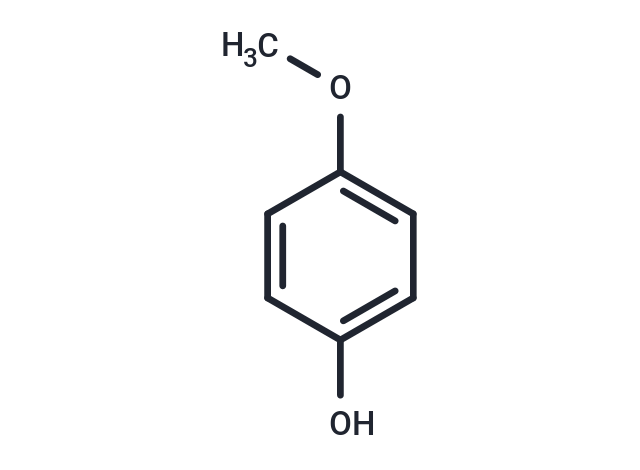Shopping Cart
- Remove All
 Your shopping cart is currently empty
Your shopping cart is currently empty

Mequinol (Leucobasal) is a synthetic derivate of hydroquinone and depigmenting agent. Although the exact mechanism of the depigmenting effects of mequinol remains unclear, it may exert its effect by oxidation of tyrosinase to cytotoxic products in melanocytes.

| Pack Size | Price | Availability | Quantity |
|---|---|---|---|
| 10 g | $31 | In Stock | |
| 1 mL x 10 mM (in DMSO) | $29 | In Stock |
| Description | Mequinol (Leucobasal) is a synthetic derivate of hydroquinone and depigmenting agent. Although the exact mechanism of the depigmenting effects of mequinol remains unclear, it may exert its effect by oxidation of tyrosinase to cytotoxic products in melanocytes. |
| In vivo | Leucobasal is commercially available in the United States as a 2% topical formulation for skin lightening purposes. It acts as a substrate for tyrosinase, thereby functioning as a competitive inhibitor of melanin precursor formation. When diluted in a medium or applied topically on the stratum corneum (RE), Leucobasal leads to reduced pigmentation by decreasing melanin in differentiated keratinocytes and melanocytes. This results in a lowered count of dopa-positive melanocytes induced by Leucobasal. |
| Alias | Leucobasal, 4-Methoxyphenol, 4-Hydroxyanisole |
| Molecular Weight | 124.14 |
| Formula | C7H8O2 |
| Cas No. | 150-76-5 |
| Smiles | COC1=CC=C(O)C=C1 |
| Relative Density. | 1.55. Temperature:20 °C. |
| Storage | Powder: -20°C for 3 years | In solvent: -80°C for 1 year | Shipping with blue ice. | |||||||||||||||||||||||||||||||||||
| Solubility Information | H2O: 23 mg/mL (185.27 mM), Sonication is recommended. Ethanol: 24 mg/mL (193.33 mM), Sonication is recommended. DMSO: 50 mg/mL (402.77 mM), Sonication is recommended. | |||||||||||||||||||||||||||||||||||
Solution Preparation Table | ||||||||||||||||||||||||||||||||||||
H2O/Ethanol/DMSO
| ||||||||||||||||||||||||||||||||||||

Copyright © 2015-2025 TargetMol Chemicals Inc. All Rights Reserved.